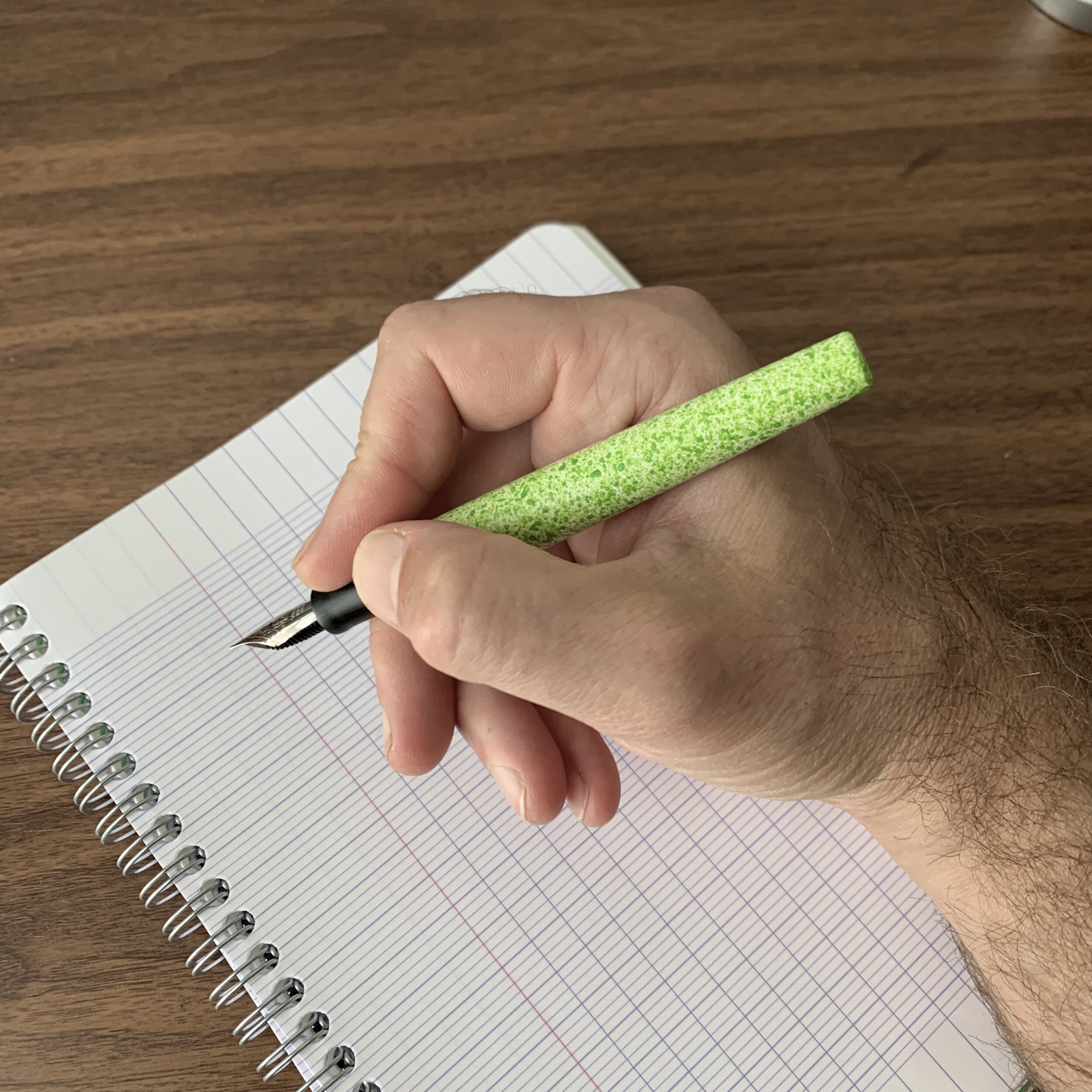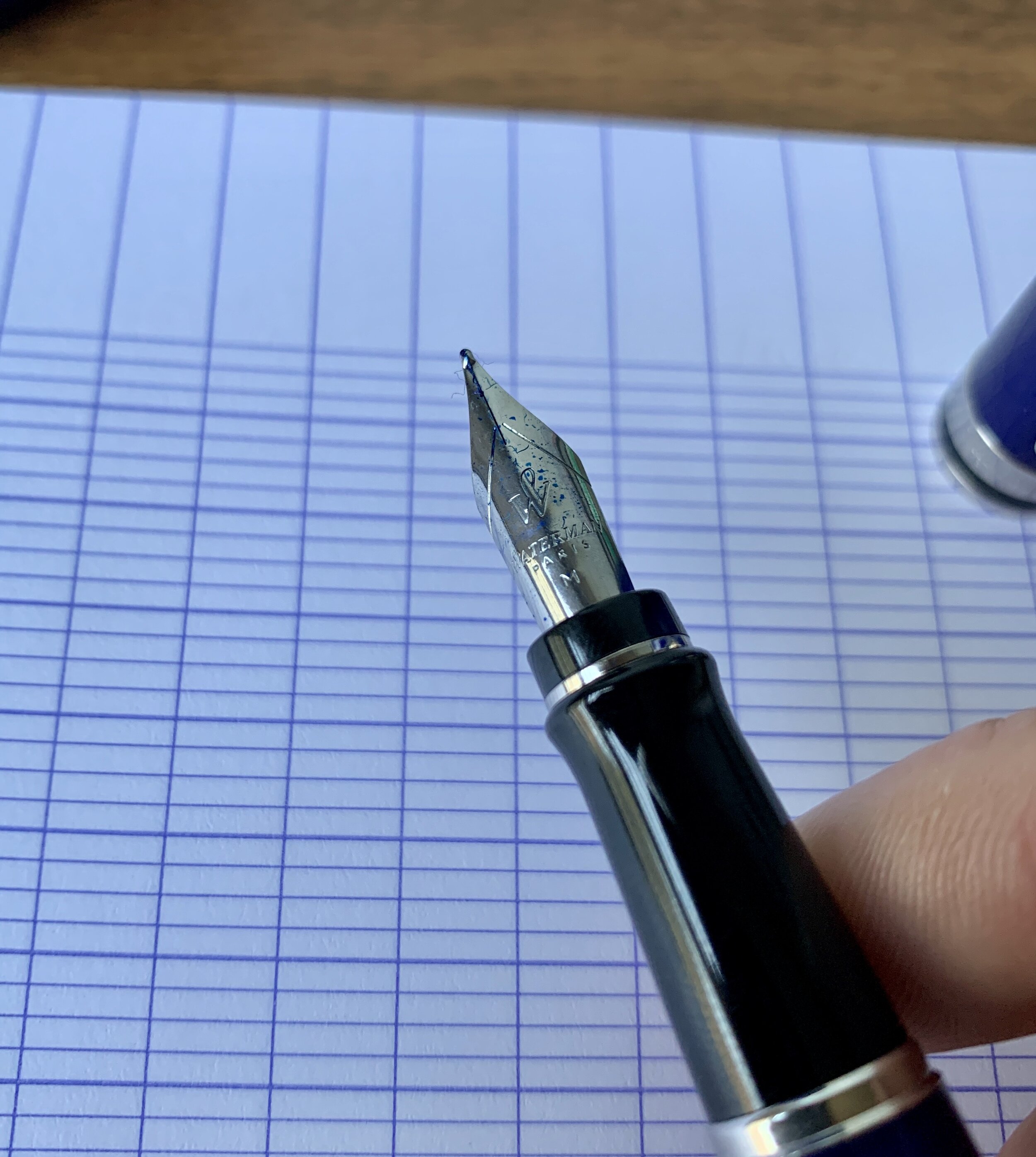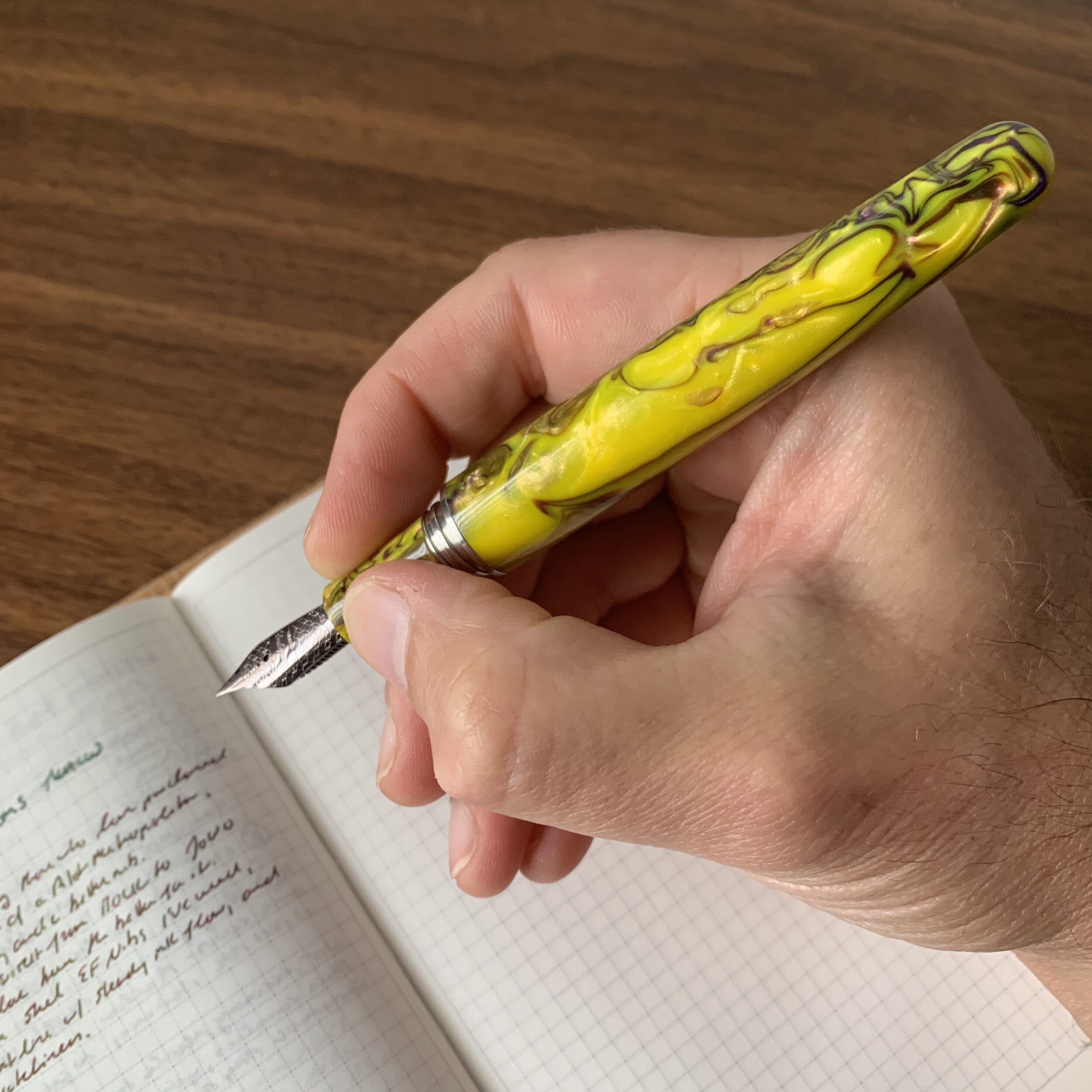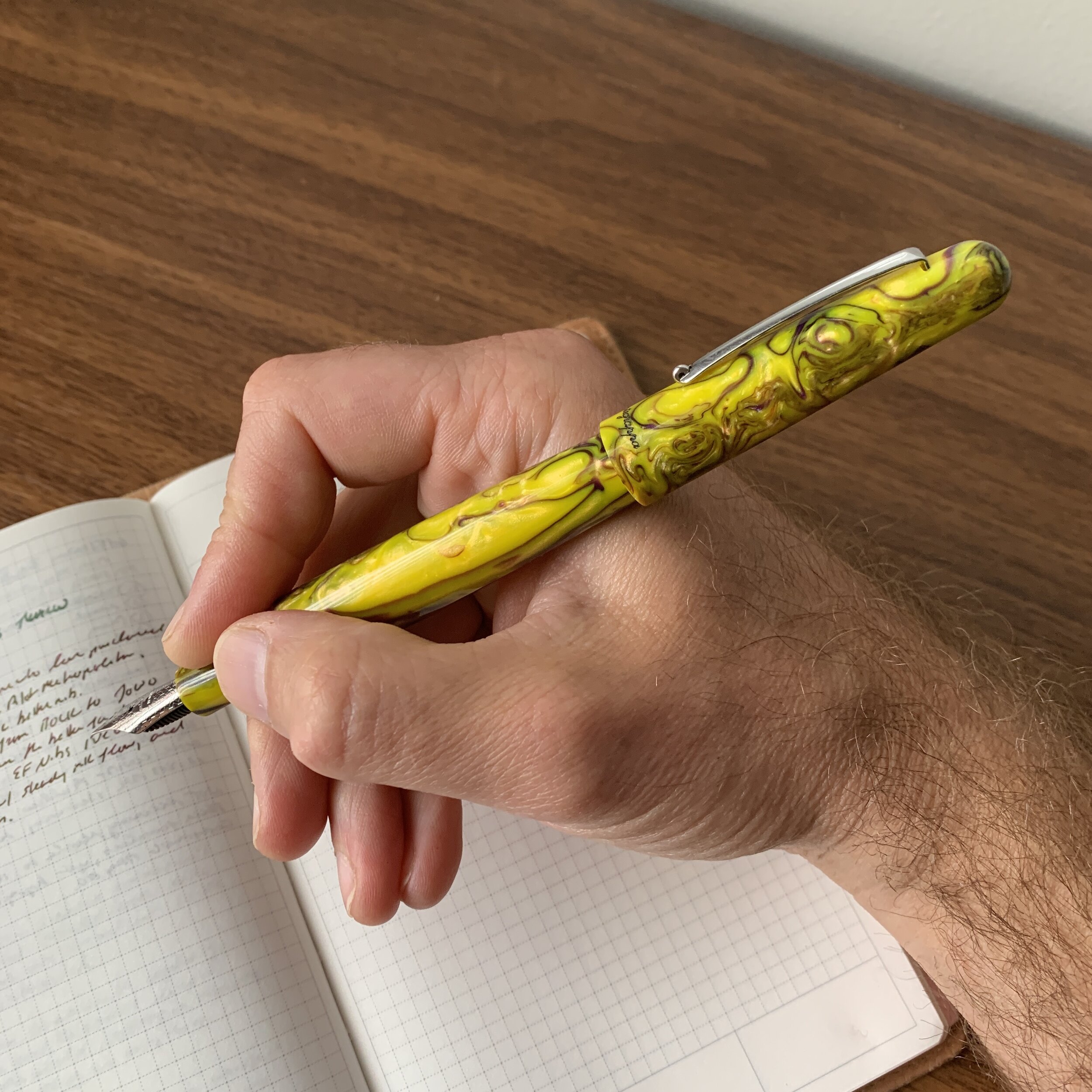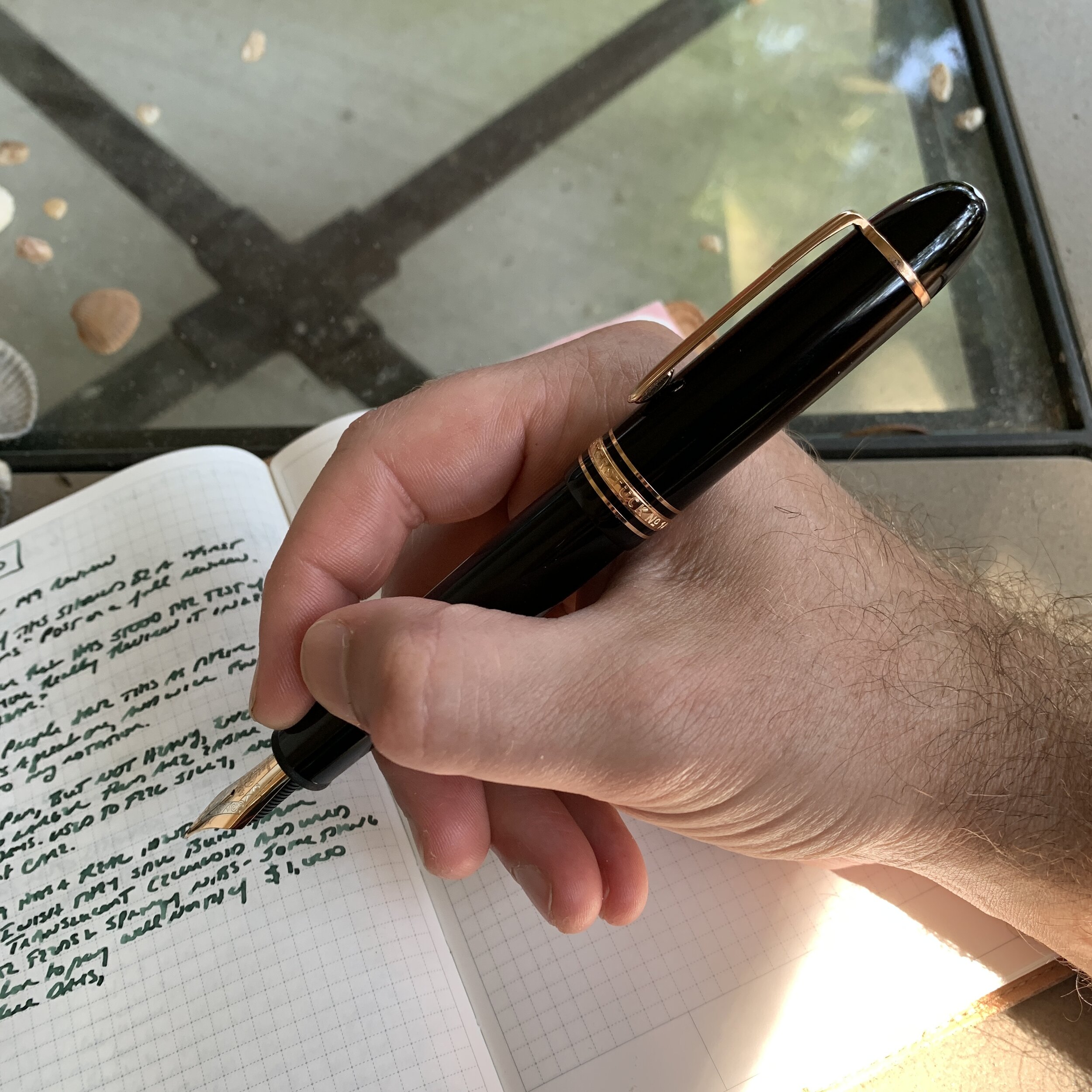In less than two years since acquiring the relaunched brand, Kenro has grown Esterbrook into a fixture of the modern fountain pen scene. Their original release, the “Estie,” is wildly popular, as evidenced by the success of the recently released oversized “Sparkle” edition, made with Diamondcast acrylic, which many retailers already have sold through. Beyond the Estie, the company has begun to get some traction with what I will describe as their secondary model, the Camden, an anodized aluminum pen that originally came in three brushed “satin” finishes: Rose, Silver, and Graphite. Today, I look at a limited edition version: the Camden “Composition” in “Spring Break Fluorescent Green.”
The finish is my favorite aspect of the Camden Composition. The marbling has a nice texture that eliminates any slipperiness inherent in most metal pens.
The inspiration behind this limited edition will be obvious to those of you who have ever attended school in the U.S.: the classic composition book. Esterbrook has taken the Camden and applied a textured marbled finish akin to the traditional covers on these notebooks. Currently, two colors have hit the market: “Back to School Black” and “Spring Break Fluorescent Green,” with “Fall Leaves Burgundy” apparently coming in Fall 2020, per the Esterbrook website.
The Esterbrook Camden features a standard Schmidt nib without the Esterbrook branding found on the Estie. The “Composition” edition uses the same contoured brushed metal section as on the standard version.
As much as I love the finish and the aesthetics on this particular model, the Camden itself is a bit of a mixed bag for me personally. While it’s a well-made pen, and the stainless steel Schmidt nib makes for an excellent daily writer, the proportions of this particular pen feel a bit off. The Camden is already a relatively long pen, and Esterbrook’s cushion-cap system (discussed further below) makes it even longer when posted because the cap doesn’t rest deeply on the barrel. As a committed “poster” - especially for daily writer-type pens intended to be used in class or at the office - I’ve found the Camden too back-heavy to use for long writing sessions. Unposted, the balance is much better, but the tapered barrel has has me really wanting to post this pen, and I can’t help but wonder how much I would love the Camden if the cap sat just a bit deeper on the back.
As I mentioned, like the Estie, the Camden features Esterbrook’s spring-loaded “cushion cap” that uncaps with only 3/4 of a turn, allowing for quick deployment. As with the Estie, there may be a bit of a learning curve for those unfamiliar with this sort of closure. In order to engage the cap you will need to gently push the cap down and turn to engage the threads. After you’ve done it once or twice, it’s not a big deal, and the purpose behind the design is similar to Platinum’s “Slip & Seal” system: the inner cap acts as a seal that prevents the nib from drying out even if you leave the pen sitting unused for long periods of time. While systems like these are nice to have, they’re not a huge draw for me personally, since I rarely leave pens sitting inked for weeks at a time (much less months).
Takeaways and Where to Buy
Like the Estie, the Camden is another well-made fountain pen from Esterbrook that will serve you well as a daily writer, but if you post your pens the Estie might be a better choice. Posting the cap on that pen just feels a bit more secure, and the slightly shorter posted length and lighter-weight acrylic makes the Estie more comfortable for me to write with for longer sessions. Price-wise, the Camden and Estie both sit at the $156 retail price point - the current standard for higher-end steel nib pens - so I can’t really argue with Esterbrook’s decision here, even though I might like to see the Camden closer to $130 simply because the Estie feels more “premium.”
The Esterbrook Camden compared against the Estie.
I acquired the pen featured in this review from site sponsor Pen Chalet, which currently has the Camden Composition in stock in both the “Back to School Black” and “Spring Break Fluorescent Green” finishes. Though I’ve not yet seen the pen start to sell out, Esterbrook apparently has limited the run to 250 pens in each color, so eventually this one will go away.
Disclaimer: This post contains affiliate links. The Gentleman Stationer is a participant in the Pen Chalet affiliate program, which allows me to earn store credit for orders placed with Pen Chalet through links on this site. It’s one of many ways I’m able to support the blog and continue to acquire new products for review.
